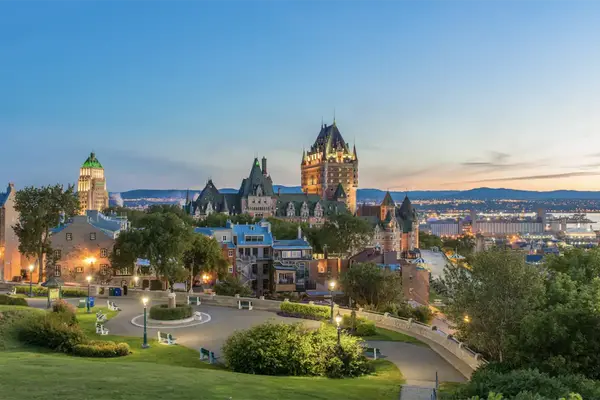There won't be a better time to sell the northern lights (well at least for another 10 years)
The aurora borealis has been particularly dazzling of late, but how long is the current solar cycle predicted to last? Our writer finds out from the experts

Although stone cold sober stumbling outside the Lazy Bear Lodge in Churchill, I’m intoxicated by the astral shenanigans in the night sky above. Above dancing bands of luminous green shapes like lava lamp plasma, is a curtain of pinkish vermilion swishing open and shut. The lights shape shift abruptly before in one cosmic flicker they form into a knotted arc curved like a psychedelic rainbow across the surrounding sea.
I travelled to Arctic Canada, to the town of Churchill on the Hudson Bay, widely regarded as the best place in the world to witness the northern lights. Here, they boast 300 clear nights each year and during a three-night stay I was treated to aurora borealis displays that blew my mind. This winter, however, will see northern lights sightings that will prove to be fabulous and send clients home in raptures across the Arctic region because of Solar Cycle 25.
This solar cycle is upon us now. It’s a phenomenon, first identified in the 1820s, of cyclical sunspot activity that correlates to the fluctuating intensity of the northern lights. It occurs over an 11-year cycle and currently sunspot activity is at its maximum peak of that cycle.
These peak episodes see large volumes of plasma and matter ejected from the sun to hurtle 149-million kilometres to Earth to collide with our atmospheric shield and spark the auroras. Occasionally these mass ejections are huge and identified as solar storms. When this happens, the northern lights are spectacular – as they were back on 11 May when people all over the UK, even in light-polluted cities, posted incredible pink-sky aurora shots from their mobile phones.
“Magnetic particles lighting up our skies demonstrate the Earth’s connection to the sun, which is something quite amazing,” explains Dr Sarah Gibson, a solar physicist with the National Centre of Atmospheric Research in Colorado. She accompanied my northern lights tour to Churchill. Selling trips with an expert onboard really enhances understanding behind the aurora’s complex science.
Northern lights prospects for 2026
The good news for the travel sector is scientists predict this high solar cycle activity will carry on into the next winter season. “A solar cycle maximum will last around two years and as we have just come into it, this should ensure good sightings into winter 2025 to 2026,” she predicts.
The publicity surrounding Solar Cycle 25 is likely behind a surge in demand for northern lights watching holidays. “Northern lights season is always busy for us, but the last few years have been increasingly popular as word has spread about the solar cycle,” explains Andrea Godfrey, head of Regent Travel.
New air routings have also enabled this rising demand. “This year we’ve seen a shift towards North Norway and Sweden, with Norway’s growth facilitated by a raft of new direct winter services from the UK to Tromsø courtesy of easyJet, SAS and BA,” says Godfrey. “We have seen an increase of 62% in Norway overall (across both summer and winter), and it has been great to see the increased interest in Northern Iceland following easyJet’s recent winter launch into Akureyri from Gatwick and Manchester”.
Visit North Iceland cites a 66% chance of seeing the aurora across a three-night stay and 90% across a five-night stay. These are exceptional high outcomes given how the vagaries of poor visibility due to unhelpful weather such as cloudy night skies can impact a trip.
Hurtigruten are so convinced clients will see them this winter during their Norwegian coastal cruises they’re offering their ‘Northern Lights Promise’. This offers a free-of-charge six-day southbound or seven-day northbound coastal express voyage to any passenger that does not experience them on their original cruise. “Astro-tourism bookings have seen an impressive surge, especially with our dedicated Astronomy voyages, where bookings from the UK market increased by over 250% from 2023 to 2024,” explains Iain Powell, Hurtigruten’s vice-president of sales and marketing.
Solar Cycle 25 should be sold citing its generational display of solar brilliance lighting up our night-time skies. It will linger until next winter, but folks should hurry because after this one the next solar cycle (number 26) won’t reach its peak until 2035.
Book it
Regent Holidays offer five-day North Iceland fly-drive breaks this winter from £1,095pp based on two people sharing. Price includes flight to Akureyri, accommodation and car-hire; regent-holidays.co.uk
Lazy Bear Expeditions will host five-night Ultimate Northern Lights Solar Science Adventures in Churchill, Canada, from September 2025 from £3,783pp based on two sharing. Includes three-nights full-board lodge accommodation; Lazy Bear Lodge can be booked through canadianaffair.com
Hurtigruten is running an Astronomy Voyage with 10 departures between February 2025 and March 2026. The 12-day Coastal Express with an expert astronomer onboard is a round-trip from Bergen to the Arctic. Priced from £2,257pp based on a shared cabin, this includes full-board and an exclusive excursion to the Planetarium in Tromso, but flights are extra; hurtigruten.com














